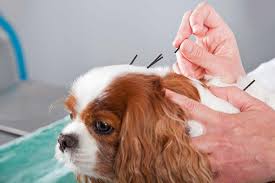When your pet hurts, you feel it too. Understanding how general veterinarians manage pain in pets can bring peace of mind. Pain relief is not just about comfort. It helps healing. If you’re looking for a veterinarian in Lambertville, you’ll find someone who uses proven methods to keep your pet comfortable. Vets listen and assess your pet’s needs with care. They start by identifying the pain’s cause. Then, they choose the best approach. Options range from simple steps like rest and ice packs to medications. Each pet is unique. So, vets tailor treatments to fit them. They also guide you on how to care for your pet at home. By understanding the signs of pain, you can help your pet recover faster. Tools and techniques may vary, but the goal remains the same: to ease suffering and support healing. Your pet deserves the best care possible.
Recognizing Pain in Pets
Pain in pets can show in various ways. Changes in behavior, appetite loss, or vocalization can be signs. Noticing these changes early can lead to quicker relief. For instance, a dog might limp after a long walk or a cat might hide more often. If you notice any unusual behavior, it’s crucial to consult a vet promptly.
Pain Management Techniques
Veterinarians have several tools to manage pain. Each method helps different kinds of pain. Here’s a look at common approaches:
- Medication: Vets often prescribe medications to relieve pain. Nonsteroidal anti-inflammatory drugs (NSAIDs) are common.
- Physical Therapy: Exercises and massages can help reduce pain, improve movement, and strengthen muscles.
- Alternative Therapies: Acupuncture and laser therapy offer relief for some pets.
Understanding Medication Options
Medications play a vital role in pain management. Here is a comparison of common drugs:
| Medication Type | Purpose | Common Side Effects |
|---|---|---|
| NSAIDs | Reduce inflammation and pain | Stomach irritation, kidney issues |
| Opioids | Severe pain relief | Sedation, nausea |
| Gabapentin | Chronic pain and seizures | Drowsiness, imbalance |
Making Informed Choices
As a pet owner, you play a key role in the pain management process. Discuss the risks and benefits of each treatment with your vet. Always follow the vet’s advice on dosage and administration.
Home Care Tips
At home, you can enhance your pet’s comfort by:
- Providing a quiet space for rest
- Ensuring accessibility to food and water
- Monitoring behavior changes
These simple steps can improve recovery. For further guidance on home care, explore resources from the AVMA.
The Role of Regular Check-Ups
Regular veterinary visits are essential. They help track your pet’s progress and adjust treatments if needed. Routine check-ups ensure your pet stays on the path to recovery.
Looking to the Future
Staying informed about pain management can help your pet enjoy a healthier life. The bond between you and your vet is crucial. It ensures that your pet receives the best care available. For more information on veterinary care, visit the FDA’s Animal & Veterinary section.
Your pet’s comfort and well-being is the highest priority. By understanding and engaging in their care, you provide them with the love and support they need. Together with your vet, you can navigate the journey towards a pain-free life for your beloved pet.
